- News
- Finds
- History
- Holidays
- Arch'gy
- Exporting
- Treasure
- Awards
- Tips
- Comps
- Forum
- Club info
- Contact
 |
Metal detecting holidays in England with the Worlds most successful metal detecting club Twinned with Midwest Historical Research Society USA |
 |
Metal detecting holidays in England with the Worlds most successful metal detecting club Twinned with Midwest Historical Research Society USA |
2011 March finds page |
|||
Treaty series 1361- 1369 Edward III hammered gold 1/4 noble - Std C type, Double Satire stops - Voided quatrefoil in centre of reverse Obv EDWARD DEI GRA REX ANGL 1.93g, 19.16mm |
|||
3rd/4thC Roman crossbow brooch |
|||
Neat 19thC silver thimble - engraved PAT.G This thimble has another silver liner or another thimble ? |
|||
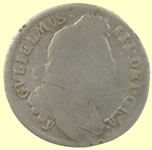 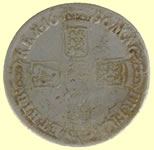 |
 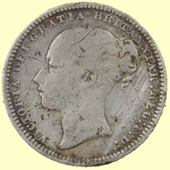 |
||
1696 William III milled silver sixpence |
1875 Victoria milled silver shilling (12 pence) |
||
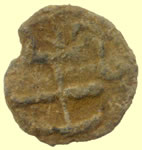 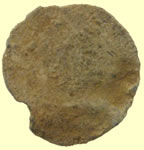 |
  |
||
Saxon looking lead token |
Medieval knife pommel |
||
 |
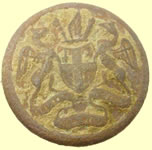 |
|
|
19thC Victorian Royal Engineers button |
Corporation button |
Saxon Stirrup terminal Early Medieval 11th century |
|
 |
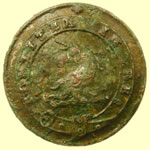 |
 |
|
Army officer lapel badge |
Corporation button |
Medieval key |
|
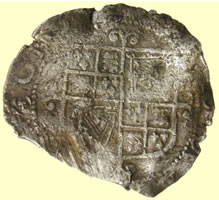 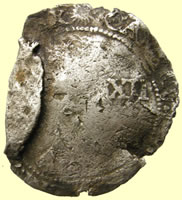 |
 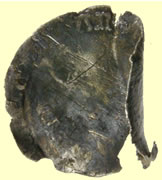 |
||
1645-6 Charles 1st hammered silver shilling (12 pence)- Sun mint mark |
1554 Mary hammered silver groat |
||
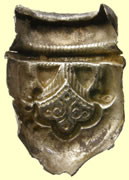 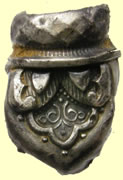 |
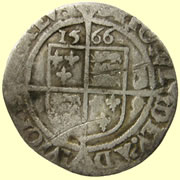 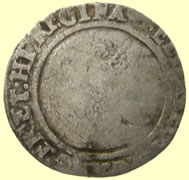 |
||
Difficult to date - Silver knife chape - reported to museum as possible treasure |
1566 Elizabeth 1st hammered silver sixpence |
||
  |
 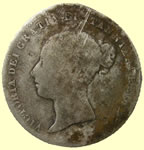 |
||
19thC Victoria milled silver sixpence |
1864 Victoria milled silver sixpence |
||
 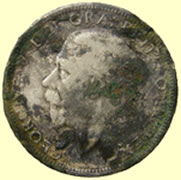 |
 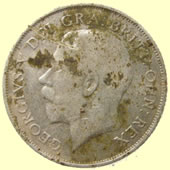 |
||
1929 George V milled silver Florin (24 pence) |
1922 George V milled silver shilling (12 pence) |
||
 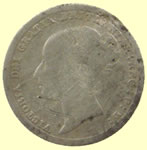 |
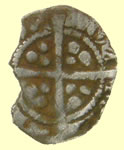 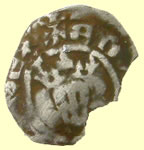 |
||
1887 Victoria milled silver sixpence |
1300 Edward 1st hammered silver farthing Obv EDWARDVS REX |
||
 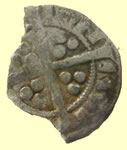 |
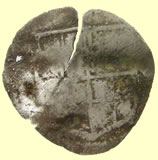 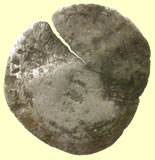 |
||
1340 Edward III hammered silver farthing Rev DVN - Durham mint |
1603 James 1st hammered silver half groat |
||
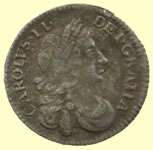 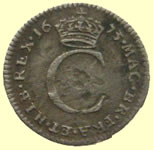 |
 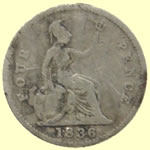 |
||
Tiny 1675 Charles II milled silver penny |
1836 William IV milled silver four pence |
||
 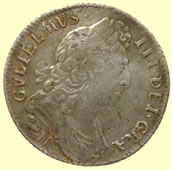 |
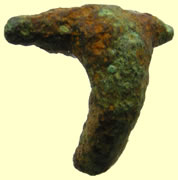 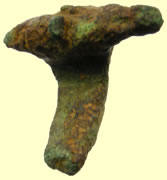 |
||
1696 William III milled silver shilling -Norwich mint |
2ndC Roman fibular brooch |
||
  |
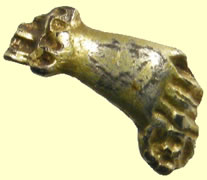 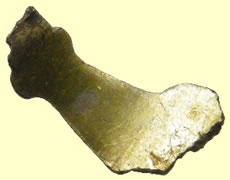 |
||
100BC to 40 AD Iron Age harness ring |
Medieval Gilded silver statue arm - reported to Colchester museum as potential treasure 16.61mm L,0.92g |
||
 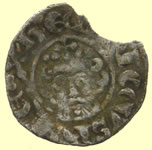 |
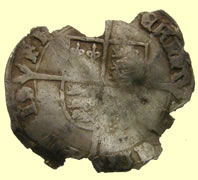 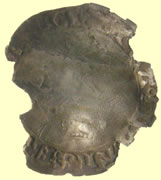 |
||
1208-9 King John hammered silver short cross penny - Class 6c1 Obv HENRICVS REX Rev ***ON LVNDE+IG ** - Moneyer ILGER of London mint |
1554 Mary hammered silver groat |
||
  |
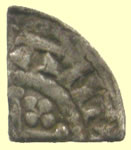 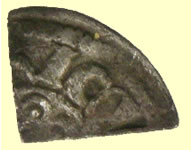 |
||
Taco'd Medieval hammered silver penny Rev CIVI/TAS/LON/DON - London mint |
1215 Henry III hammered silver short cross qtr penny Obv HENRICVS REX **ANT+ - Canterbury mint |
||
 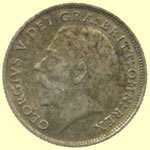 |
 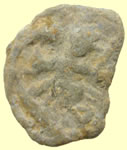 |
||
1923 George V milled silver sixpence |
Roman lead token |
||
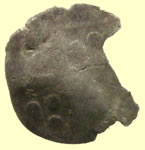 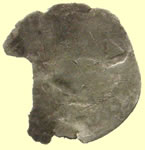 |
  |
||
Worn medieval hammered silver penny |
Medieval gilded cross fragment |
||
|
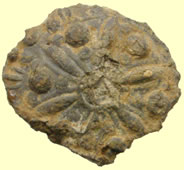 |
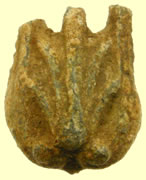 |
|
Plain copper finger ring |
17thC lead mount |
Medieval pilgrims lead badge |
|
 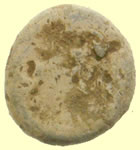 |
 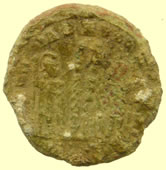 |
||
C10thC Saxon lead gaming piece |
4thC House of Constantine Roman bronze coin - sent for ID That would be Constantine I - "The Great" - (307-337 AD) styling himself as "CONSTANTINVS MAX AVG" on the obverse with a double-standards GLORIA EXERCITVS reverse. The double-standard GE's date to ~330-335 at all mints.
I haven't been able to tease any detail out of the exergual mint mark, so I can't tell you which mint produced it, but it seems as though the mints of Trier, Lugdunum and Arles are heavily represented in the mix of Imperial Æ's you find.
Mark
|
||
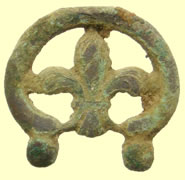 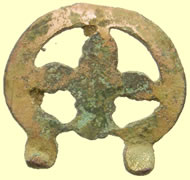 |
 |
 |
|
Medieval gilded fleur de lis mount |
WW1 Manchester Regiment lapel badge |
Local Essex police hat badge |
|
  |
 |
||
1816 George III milled silver sixpence |
Stunning decorated 16thC Tudor clothing fastener |
||
  |
|||
Superb squashed Georgian copper water jug |
|||
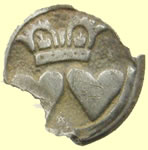 |
  |
||
17thC Charles II silver button - reported as treasure to museum |
1645 Charles 1st hammered silver half groat - Ashby mint |
||
|
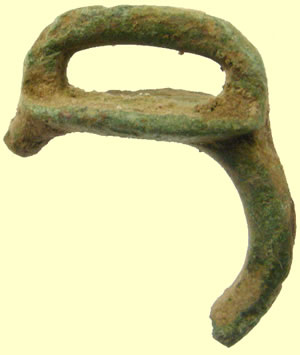 |
||
17thC decorated copper finger ring |
Protected loop terrets are usually considered to be Roman and dating to the late first and second centuries AD |
||
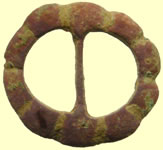 |
 |
 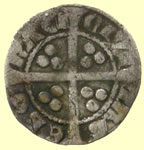 |
|
17thC buckle
|
18thC toy cannon |
1341 Edward III hammered silver penny florin penny Obv EDWR ANGLE DNS HYB Rev CIVI/TAS/EBO/RACI - York mint |
|
 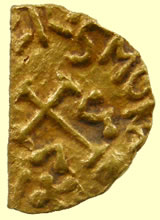 |
|||
Monster find C600 AD English Saxon gold - probably crondel type - reported as hoard to museum and sent off to Dr Martin Allen for ID 0.87g, 12.39mm As usual this coin (EMC 2011.0059) is Merovingian and not Anglo-Saxon, but an important find nonetheless. We have recorded two cut halves of Anglo-Saxon gold shillings in recent years, and a cut half of a Series B sceat, but this coin is noticeably more than a half (between two-thirds and three-quarters), so it may have been cut up as bullion. This is developing into a really interesting hoard. Best wishes, Martin
Martin |
|||
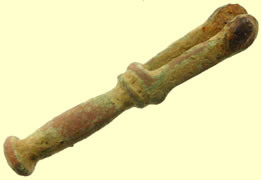 |
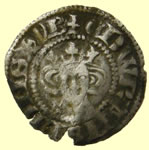 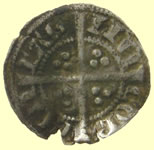 |
||
Georgian pastry jigger handle |
1279 Edward 1st hammered silver penny florin penny - Cross potent- Class 3d - annulet tail on R Obv EDWR ANGLE DNS HYB Rev CIVI/TAS/LIN/COL - Lincoln mint |
||
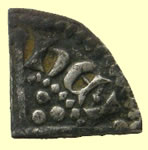 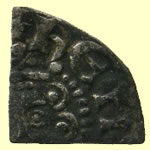 |
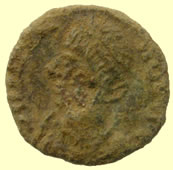 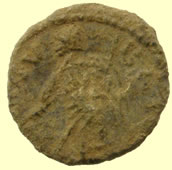 |
||
1247 Henry III hammered silver voided long cross qtr penny Obv HENRICVS REX Rev ** /hEN/ - Moneyer Henri of London |
Roman bronze coin sent for ID I suppose this might be the one you were asking about. This actually isn't "the typical 4th century Æ" - it gives me the impression that it is an unofficial, local product. In fact, I'm not even certain what the prototype was supposed to be. It's interesting because generally it's easy to tell what the local mints were copying. This might have started out trying to be a PAX reverse, but what it wound up being I'm not altogether sure - also the portrait is wrong on a number of considerations. It does not look a though it has literate legends, either - the "legends", particularly on the obverse, seem to have been reduced to a design element - a "decorative border" if you will.
Mark
|
||
|
|||
Great relic - 1638 Charles 1st milled silver crown forgery Two thick silver sheets over a copper core |
|||
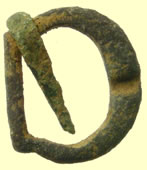 |
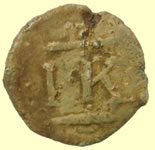 |
 |
|
Medieval buckle |
17thC lead token |
Medieval hanging pendant |
|
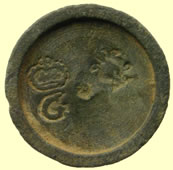 |
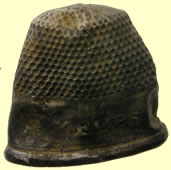 |
||
Georgian trade weight - Crown G cipher |
19thc silver thimble - 'KEEPS' |
||
|
|||
Stunning Medieval animal headed pouring spout |
|||
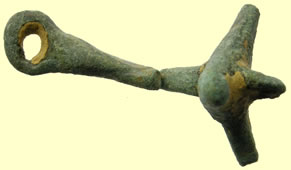 |
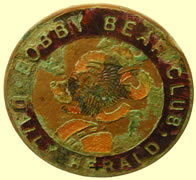 |
||
Roman prick spur |
Bobby Bear Club enamel badge issued by the Daily Herald newspaper (London), early 1930sThe Daily Herald newspaper first published the Bobby Bear comic strips in 1919. Other newspapers, notably in Australia, followed on and these were also immensely popular. By the early 1930s newspaper’s children clubs were in full swing and the Daily Herald launched their own Bobby Bear Club as part of a general media war to increase circulation. Later during the 1930s The Star and The Argus (Melbourne), both of Australia, brought out their own versions of the Bobby Bear Club together with similar badges. Bobby Bear himself was based on the traditional Steiff bear figure, a high-quality, plush toy figure made from 1902 by the German company of Margarete Steiff GmbH. At about the same time the Teddy Bear toy was also invented in the US where the US president, Theodore ‘Teddy’ Roosevelt lent his nickname to the toy. The Bobby Bear club was free to join and only required a number of newspaper coupons. On joining, a certificate, handbook and enamel badge were issued with organised club events for children and other announcements printed in their newspapers. The Bobby Bear club like others, was involved in charity and hospital fund raising. One popular event was the Daily Herald’s ‘Help the Hospitals Contest’ that involved children dressing up as Bobby Bear and other related characters to sell raffle tickets and raise funds for hospitals nationwide. They were big events with big prizes too, for example in 1932 there was a £20,000 prize with raffle tickets costing 6d (6 pence) each. An immense amount of money in those recession days when a nice London suburban house would cost less than £5,000 This badge was produced from die stamped brass with two enamels (red & light yellow). There is a pin fitting on the reverse with an imprint of the manufacturer’s name of ‘Roden, London’. The badge measures just slightly above 1” diameter (26mm approx.). The Australian newspapers mentioned above also issued their own badges. These were the same design and style, the only difference was they substituted the newspaper name with their own. |
||
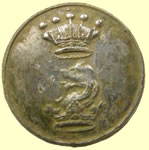 |
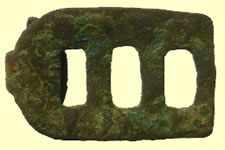 |
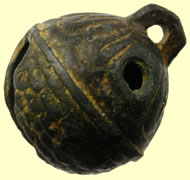 |
|
17thC livery button |
18thC clog fastener |
17thC fish scale crotal bell |
|
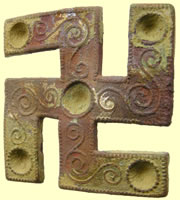 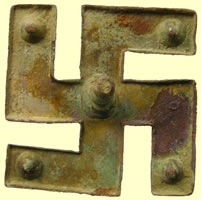 |
 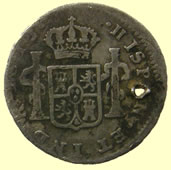 |
||
Swastika mount - long before the Nazi's used it In medieval times it was the gammadion, used to symbolize Christ as the cornerstone, also the four Evangelists, with Christ as the centre
The word swastika came from the Sanskrit word svastika, meaning any lucky or auspicious object, and in particular a mark made on persons and things to denote good luck. |
1799 Carlos IIII Spanish milled silver 1/4 reale |
||
|
|||
Medieval dagger quillion |
|||
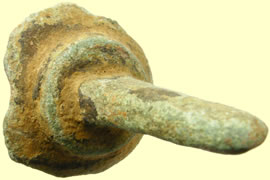 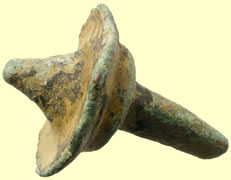 |
  |
||
Huge Roman mount |
Georgian watch winder |
||
   |
|||
Very unusual zoomophic Saxon mount |
|||
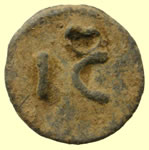  |
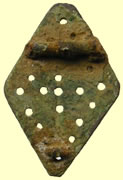 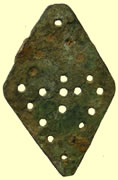 |
||
17thC lead token |
Saxon perforated brooch |
||
 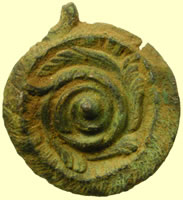 |
  |
||
Ink well cover ? |
1199 AD John hammered silver short cross cut halfpenny - Class 5 or 6 Obv HENRICVS REX Rev **LF.ON.** Moneyer Ravf |
||
  |
  |
||
13thC Scottish hammered silver half penny |
1180 AD Henry II hammered silver short cross cut halfpenny - Class 1b Rev ** + EDR ** Moneyer Edrich of Worchester mint |
||
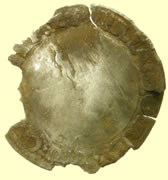 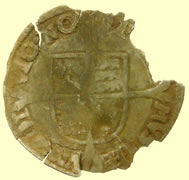 |
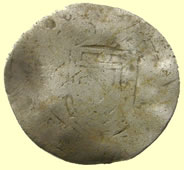  |
||
1554 Mary hammered silver groat |
1542 -1567 Scottish Mary hammered silver coin - cannot find the M with L by right side or annulets under crown, still researching |
||
  |
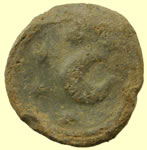 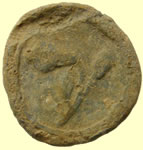 |
||
Saxon lead trade weight |
17thC lead token |
||
  |
  |
||
medieval mount |
1929 George V milled silver sixpence |
||
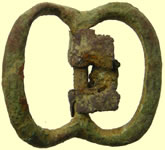 |
 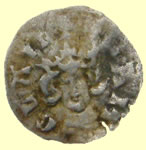 |
||
1550-1650 buckle |
Brilliant rare silver farthing find - never seen one with this legend and this is a class 20a mis spelling type Sterling silver issue 1279 Edward 1st hammered silver farthing- no inner circle on New reverse legend type - Class 20a Obv +ER AN GL AII Rev CIVI/TAS/LON/DON - London mint 11.64mm,0.27g |
||
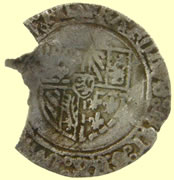  |
 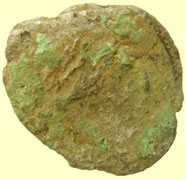 |
||
Huge 1475 Dutch -Karel de Stoute -hammered silver DOUBLE STUIVER |
Debased Roman silver coin - 'cooking' to remove green crust Not too much for me to go on - What I can say with certainty is that i'ts an antoninianus, and silvered antoniniani date to the period between 265-290 AD.
I suspect, although/because the portrait doesn't look much like him, that this is an early issue by Aurelian (270-275) - He instituted a reform in the coinage which made the coins larger and generally of better workmanship with better silvering.
All I can make of the reverse type, by placing the long line at the bottom as a "ground-line" is that the "V" shaped object at the left on the ground looks like a bent-over captive on which Aurelian might be stepping. IF that's what it is, then this would be likely to be one of the myriad of varieties of the ORIENS AVG type showing Sol right or left, standing or walking, with 3, 2, 1 or no captives, etc.
Here's an ORIENS AVG with a somewhat similar reverse to what I think I'm seeing on this coin.
also:
Mark
|
||
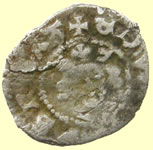  |
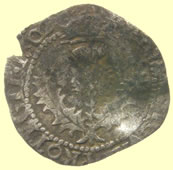 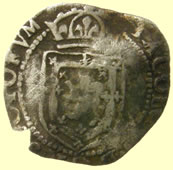 |
||
1279 Edward 1st hammered sterling silver farthing - Class 30b - oval flan Obv EDWARDVS REX A Rev CIVI/TAS/LON/DON - London mint 1.21g,11.35mm
|
1602 James VI of Scotland hammered silver Eighth Thistle Merk ( 20 pence) Obv IACOBUS 6 D.G.R.SCOTORUM - James VI by the grace of god king of the Scots Rev REGEM IOVA PROTEGIT 1602 - Jehovah protects the King 1602 |
||
 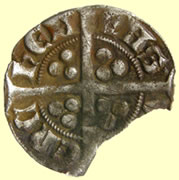 |
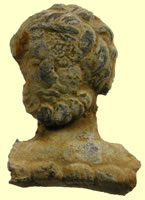 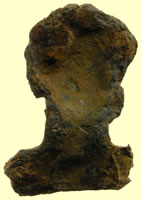 |
||
Scottish or Irish hammered silver penny ?? Rosettes by crown double satire stops both side of I Obv + xIxHONCS x HA ?? Rev /ChC/hEN/INS/ ?? |
Roman lead bust mount |
||
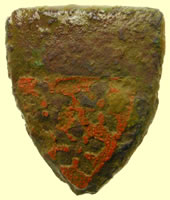 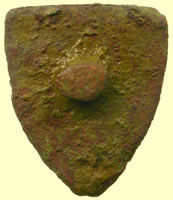 |
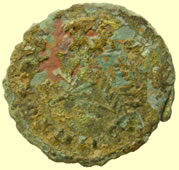 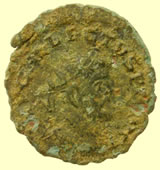 |
||
Medieval heraldic enameled shield mount - Claret coloured fesse - 3 rosettes on red enameled background
He is Moncarvel Gules three cinquefoils or Jim |
Roman bronze coin - sent for ID This piece appears to be a Quinarius of Allectus - not unlike one you sent a photo of both sides recently, although not in such nice shape. This one is also from the "C" mint - Camulodunum, or whatever city the C represented. This shows a galley being rowed and your photo is rotated about 110º counter-clockwise of correct orientation - the mast should be sticking straight up, but is currently pointing towards 8:00.
Mark
|
||
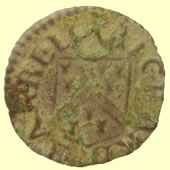 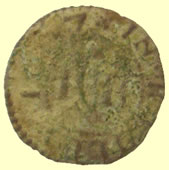 |
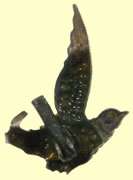 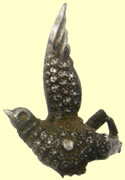 |
||
17thC Unrecorded Richard Barrell hammered copper trade farthing |
Victorian silver bird brooch |
||
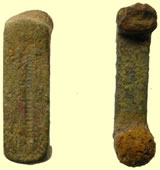 |
 |
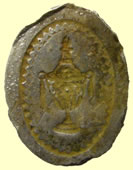 |
|
2 -17thC belt slides |
Saxon hooked clothing fastener - single rivet fixing |
Georgian cufflink |
|
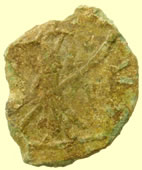 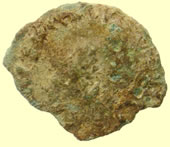 |
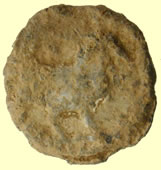 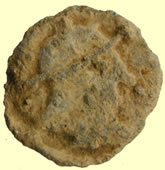 |
||
Roman bronze coin - sent for ID I can't tell much from the obverse, but given the posture of the personification on the reverse and the transverse scepter, I'm going to make an educated guess that this is most probably a PAX AVG type. Unfortunately that doesn't give us much of a hint about who might be on the obverse, since the PAX AVG reverse was one of the most common types throughout the age of Antoniniani - the 2nd half of the 3rd century - and struck by every ruler who struck the denomination.
I'd also say that depending on the size, this piece generally gives me the impression that it's not an official mint product, rather a contemporary copy.
Mark
|
Early Roman lead token Obv Helmeted bust Rev Horse |
||
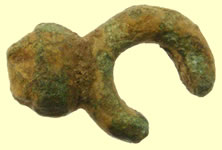  |
 |
||
Unusually thick Saxon harness cheek piece fragment |
Medieval hooked mount |
||
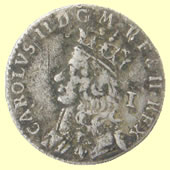 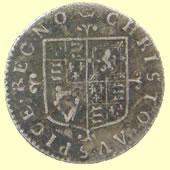 |
|||
Stunning tiny 1660 Charles II milled silver penny |
|||
  |
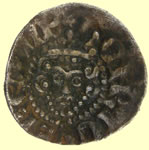 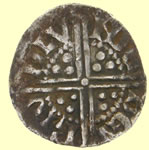 |
||
1621-3 James 1st hammered silver one pence |
1247 Henry III hammered silver voided long cross penny - Class IIIa Obv HENRICVS REX Rev hEN/RIO/NLV/NDE Moneyer Henri of London mint
|
||
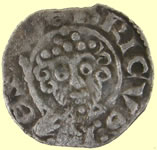  |
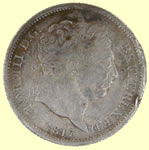  |
||
1216-47 Henry III hammered silver short cross cross penny 7a Obv HENRICVS REX Rev ** .ON. SANTEED S ** - Moneyer Simvnd Bury St Edmunds mint |
1817 George III milled silver sixpence |
||
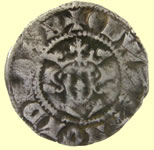 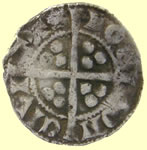 |
  |
||
1341 Edward III hammered silver long cross florin penny Obv EDWAR ANGLE DNS HYB Rev CIVI/TAS/LON/DON - London mint |
1759 Holandia Dutch copper coin |
||
  |
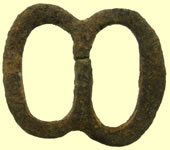 |
 |
|
1634 Charles 1st hammered copper rose farthing |
1550-1650 buckle
|
Great eyeball find 600 million year old fossil find |
|
  |
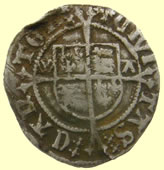 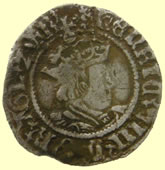 |
||
Roman bronze coin - sent for ID This is a SOLI INVICTO COMITI (Sol, the Invincible, protector) of Constantine I, "The Great". This is a follis with module reduced from the large Æ1-2 coin introduced by Diocletian, but still larger than the Æ3's which would follow. This is from the mint in Trier and dates to the period 310-313 AD.
Mark
|
1526-32 Henry VIII hammered silver halfgroat- cross patonce Archbishop Warham - WA by shield -Canterbury mint |
||
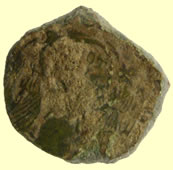  |
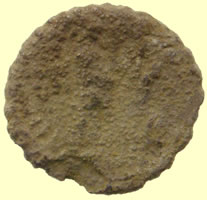 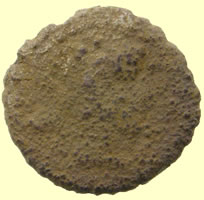 |
||
Roman bronze coin - sent for ID |
Roman BC republican silver coin - 'cooking it to remove crust |
||
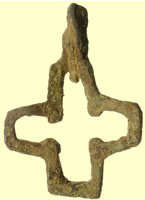 |
 |
||
Huge medieval gilded pendant |
Mount Broad period: POST MEDIEVAL |
||
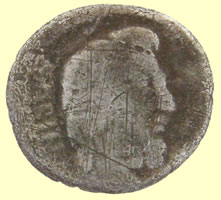 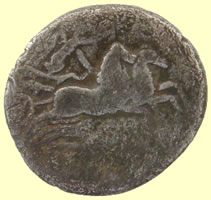 |
|||
Roman early BC republican silver coin - sent for ID 82BC Republican Roman silver coin SABIN behind the head is your tip-off here, if you're familiar at all with some of the "popular" later Republican denarii, that is. This is L. Titurius L. f. Sabinus, moneyer, about 89 BC. His fairly common pieces combine a bearded portrait of King Tatius with a couple of popular pictorial/"historical" reverses with scenes from Rome's earliest days, including "The Rape of the Sabine Women" and "Tarpeia Buried Beneath a Pile of Shields". According to RSC: "The Tituria gens traced its descent from the Sabines and possibly from King Tatius himself." This piece has one of the less exciting reverses in the series - Victory driving a biga right. Worn off your specimen is the L TITVRI below the horses and a control symbol below the lettering.
This piece is RSC/Babelon Tituria 6, RRC 344, CRR 700 & SR 253.
See: http://www.stoa.org/gallery/album98/ML_22_Tituria_den1 & http://www.stoa.org/gallery/album98/ML_23_Tituria_den2 for examples of the popular pictorial reverses in the series.
Mark
|
|||
|
|||
Huge bronze early medieval animal headed spout next to Roman silver coin for size |
|||
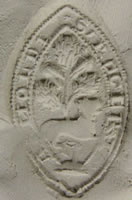 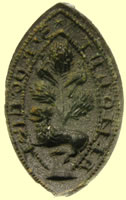    |
|||
Mint 13thC vessica seal matrix Lamb and tree of life S' ROGER' ( seal of Roger) ALEE ODOC Prior to the fifteenth century pointed oval designs, called vesica seals, were popular with noble women and also with high ranking ecclesiastics. The shape allowed room either to depict a full length standing figure of the owner, or alternatively to show scenes at two levels. Monastic seals often used the latter device, with a main, upper register depicting the monastery’s patron saint, and a small lower register in which the prior or abbot was shown praying. By the fifteenth century, vesica seals were somewhat out of fashion, but they still occur on documents, because monasteries in particular tended to continue using seal matrices made years - or sometimes centuries - earlier.
|
|||
|
|||
1stC Roman silver coin sent for the ID- in the 'cooker' to remove crust - As dug and 'cooked' pictures As you have probably figured by the unmistakable bowling-ball shape of his head, this is Trajan - Hadrian's immediate predecessor, 98-117 AD. I believe the obverse legend reads IMP TRAIANO AVG GER DAC P M TR P COS VI P P - a bit more cleaning will reveal whether I've got that correct or not - there are several minor differences possible in the obverse legend which would affect the date by a few years. The reverse is less of an issue - that's definitely S P Q R OPTIMO PRINCIPI, it shows Mars striding right holding a transverse spear and carrying a trophy over his shoulder. If I have the obverse legend correct, this coin dates to around 113-14 AD. RIC 270, RSC 372.
Mark
|
|||
Debased Roman silver coin - 'cooking' to remove green crust - Turned out to be a silver washed Roman - sent for ID Not too much for me to go on - What I can say with certainty is that i'ts an antoninianus, and silvered antoniniani date to the period between 265-290 AD.
I suspect, although/because the portrait doesn't look much like him, that this is an early issue by Aurelian (270-275) - He instituted a reform in the coinage which made the coins larger and generally of better workmanship with better silvering.
All I can make of the reverse type, by placing the long line at the bottom as a "ground-line" is that the "V" shaped object at the left on the ground looks like a bent-over captive on which Aurelian might be stepping. IF that's what it is, then this would be likely to be one of the myriad of varieties of the ORIENS AVG type showing Sol right or left, standing or walking, with 3, 2, 1 or no captives, etc.
Here's an ORIENS AVG with a somewhat similar reverse to what I think I'm seeing on this coin.
also:
Mark
|
|||
  |
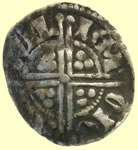 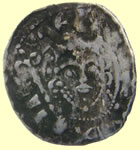 |
||
1247 Henry III hammered silver voided long crosshalf penny- Class 1a to 7 Obv HENRICVS REX Rev */ONL/VND/** London mint |
1247 Henry III hammered silver voided long cross - Class 5e Obv HENRICVS REX III Rev WIL/LEM/ONC/ANT -Moneyer Willem of Canterbury |
||
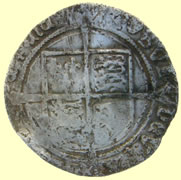 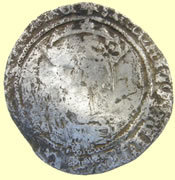 |
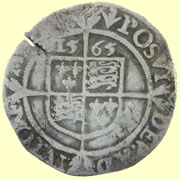 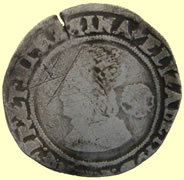 |
||
1487-8 Henry VIII hammered silver groat (4 pence) - Durham mint |
1565 Elizabeth hammered silver sixpence |
||
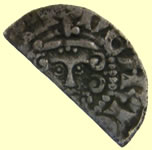  |
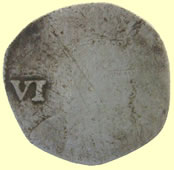 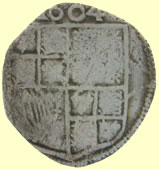 |
||
1247 Henry III hammered silver voided long cross half penny- Class 1a to 4b Rev HEN/RIO/NLV/NDE- Moneyer Henri of London mint |
1604 James 1st hammered silver sixpence |
||
  |
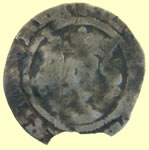 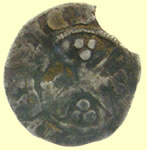 |
||
1247 Henry III hammered silver voided long cross half penny - Class IIIa Obv HENRICVS REX Rev **OLE/ONC/ Nicole of Canterbury mint |
1279 Edward III hammered silver penny Rev CIVI/TAS/EBO/RACI - York mint |
||
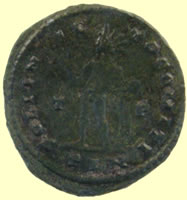  |
|||
Can Ron cleaned up his Roman and it is one of the best I have ever seen dug - mint , just sent it for ID A very pretty Constantine I SOLI INVICTO COMITI with Radiate Sol raising hand and holding a globe - I believe I wrote-up this type for you recently, so I won't repeat what I said then. This has a clear mintmark for the Mint of London, 310 AD. RIC VI 126.
Evidently you're digging in soil containing very little humic acid - and which also has not been overly saturated with modern farming chemicals.
Mark
|
|||
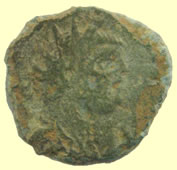 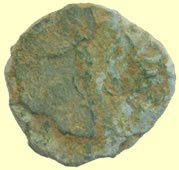 |
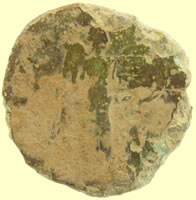  |
||
Mid 4thC Barbarous Radiate Roman bronze coin |
Huge Roman As sent for ID It's probably best - or at least easiest - to identify this piece for you this way, see: http://www.stoa.org/gallery/album94/ML07_M_Aurel_Vic_Writing_sest
Since their portraits are so similar, and the legends are as well, since the legends are almost gone on your specimen, it could be either Aurelius or Verus. On the basis of general scarcity, I'd say it's more likely to be Marcus Aurelius, but the portrait favors co-emperor Lucius Verus. In either case, this type - Victory hanging a shield inscribed VIC / PAR on a palm tree - dates to 166 AD.
Mark
|
||
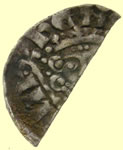  |
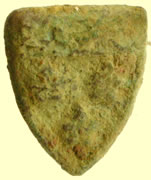  |
||
1247 Henry III hammered silver voided long cross half penny Obv HENRICVS REX Rev **ONC/ANT ** Canterbury mint |
13thC Heraldic shield mount He is Moncarvel Gules three cinquefoils or Jim |
||
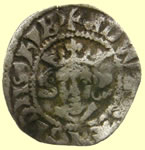 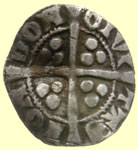 |
 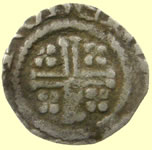 |
||
1341 Edward III hammered silver long cross florin penny Obv EDWAR ANGLE DNS HYB Rev CIVI/TAS/LON/DON - London mint |
1189 Richard 1st hammered silver penny |
||
1799 George III half golf guinea |
|||
 |
 |
 |
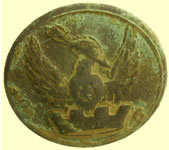 |
20tghC corporation button |
20thC enameled badge |
Roman pin |
19thC livery button |
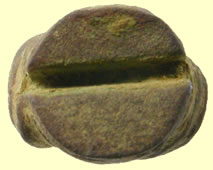 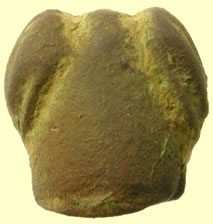 |
 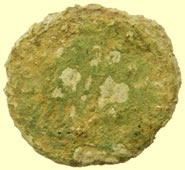 |
||
Medieval knife pommel |
Roman bronze coin - sent for ID |
||
  |
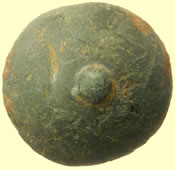 |
 |
|
1500-1700 mount |
1500-1700 mount |
18thC clog fastener |
|
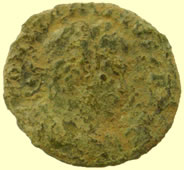 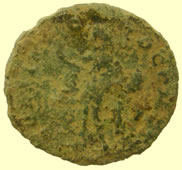 |
 |
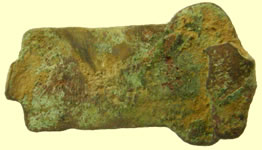 |
|
Roman bronze coin - sent for ID |
Medieval D buckle |
18th Clog fastener |
|
 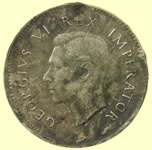 |
 |
||
1943 South African George V milled silver 3 pence |
Roman pendant ? |
||
 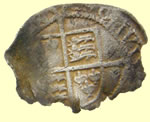 |
 |
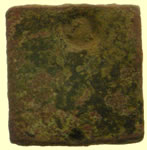 |
|
1461 Edward IV hammered silver penny - First reign, Crown mintmark |
Medieval hooked mount |
18thC bullion weight |
|
 |
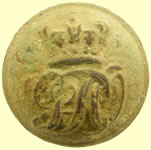 |
 |
|
Georgian buckle |
GR Military button |
17thC belt slide |
|
 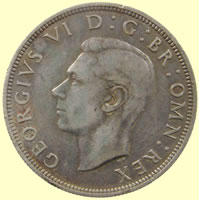 |
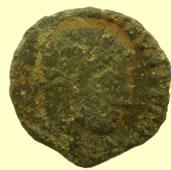 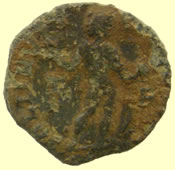 |
||
1939 George VI milled silver half crown (30 pence) |
Roman bronze coin - sent for ID It's difficult to tell if there's anything unusual about it, but it is of the same general type as that beautiful reduced follis from the London mint you sent yesterday - SOLI INVICTO COMITI - with radiate Sol standing left raising a hand and holding up a globe. These were struck pretty much across the entire Empire at the time ~ 310-315 AD.
I'd have to check to be sure whether or not this type was struck at every Imperial mint, but it was certainly struck in all the European mints.
Mark
|
||
  |
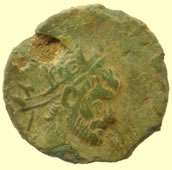 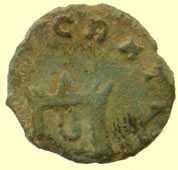 |
||
1247 Henry III hammered silver voided long cross half penny Obv HENRICVS REX Rev **AN/IOh/ ** Monyer IOhANES of Canterbury mint |
Roman bronze coin - sent for ID This appears to be an official-issue posthumous commemorative CONSECRATIO, "billon" (more like Æ, actually) antoninianus of Claudius II, Gothicus. He was the elderly successor to Gallienus in the Roman Principate and ruled for 2 years, 268 until his death in 270. His posthumous coins may well outnumber his lifetime issues. This was also one of the most copied prototypes for so-called "barbarous radiates" - the very common local, unoffically or only semi-offically produced emergency currencies which filled-in for regal coin while the Empire was tottering on the brink of collapse in the mid 3rd century.
This piece appears to be official, but the best of the "barbarous" work is often of higher artistic merit than the work produced by the mint in Rome at this point in time, and it can be very difficult to make a determination with assurance whether or not any given specimen is official or a contemporary copy. Looking for hallmarks like evenly sized and spaced letters in the legends, and a similar level of work between obverse and reverse will usually tend to indicate whether a piece is official or not, but I have been told that to be certain, comparison with items in the collection in the possession of Dunbarton Oaks is generally considered the "yardstick" against which workmanship on this sort of item is judged.
Mark
PS - this piece is a typical "uncertain" origin piece opf this type - http://www.stoa.org/gallery/album106/ML_13_Claud_II_Consecratio_Altar1
by clicking on the arrows in the upper right corner of the frame, you can advance forward through a number of pieces of similar "questionable" origin which span the stylistic range between almost definitely official and certainly unofficial, including several pieces from the huge Blackmoor Hoard.
|
||
 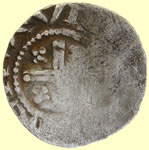 |
  |
||
1215 Henry III hammered short cross silver penny |
1341 Edward III hammered silver penny florin penny Obv EDWAR ANGL DNS HYB Rev CIVI/TAS/CAN/TOR - Canterbury mint |
||
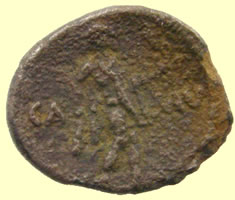 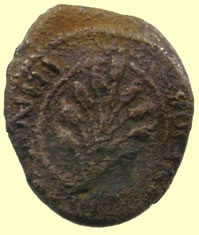 |
|||
Monster find 10-40AD Celtic Cunobelin tribe silver coin - in the 'cooker' to remove crust 13.98mm, 1.17g rev figure stg.r.,partially draped, holding club in r.hand & palm branch in 1.,to 1.'CA',to r 'MV',pellet border Obv .leaf c inside circle,to r.'CVNOB',to 1.'[ELI]NVS', pellet boarder Similar Hobbs 1897 |
|||
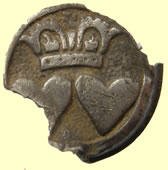 |
 |
 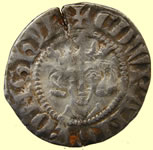 |
|
17thC Charles II silver button - reported as treasure to museum |
18thC silver Navy button |
1341 Edward III hammered silver penny florin penny Obv EDWR ANGL DNS HYB Rev CIVI/TAS/CAN/TOR - Canterbury mint |
|
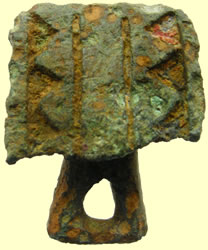 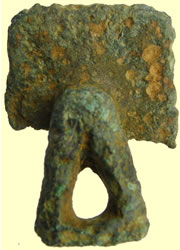 |
|||
Stunning 1stC AD Celtic enameled clothing fastener |
|||
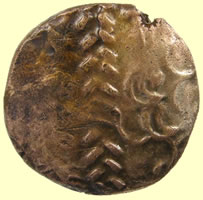  |
|||
70 BC Early uninscribed Celtic British 'A' Gold stater Westerham type Disjointed horse, pellet below 19.76mm, 6.13g |
|||
  |
 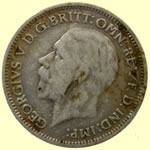 |
||
1247 Henry III hammered silver voided long cross half penny |
1935 George V milled silver sixpence |
||
 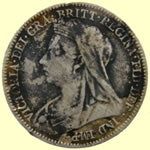 |
 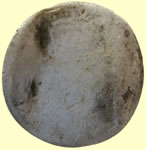 |
||
1900 Victoria milled silver sixpence |
1696 William III milled silver sixpence |
||
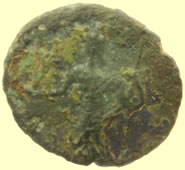 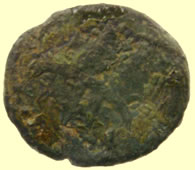 |
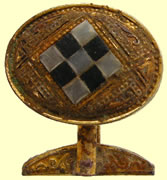 |
||
Roman bronze coin - sent for ID official Gallic Empire Ant, or a contemporary copy of one (so-called "barbarous radiate") in very good style |
Heart attack find - Georgian gilded cufflink |
||
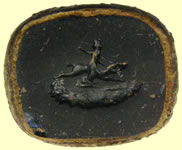 |
 |
||
Georgian intaglio fob seal - rider on horse |
17thC sword fitting mount |
||
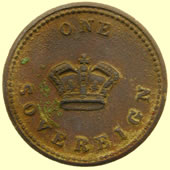 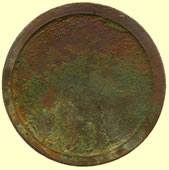 |
|||
Post 1820 1 sovereign gold coin weight |
|||
 |
|||
Great eyeball fossil find |
|||
 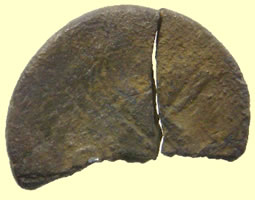 |
  |
||
Broken Roman silver coin - galley type sent for ID This is a Mark Antony "legionary" denarius. These were struck by a mint which traveled with his army and are tentatively attributed to Patrae as their place of issue. They were struck during the year previous to Antony's naval defeat in the battle of Actium. The silver in them was not quite as pure as the silver which would have been used in most Imperatorial era denarii, so they tended not to be turned-in for new coin due to being debased and of lower intrinsic value. They were, however, popular in the North and West, among the Gauls and Celtic tribes where they remained in circulation for up to several centuries. They often turn up in hoards of mid 3rd century coins, worn nearly unrecoginizeably smooth.
A decent specimen should look like this:
Here's an folder of images of most of the specimens of legionary denarius which have passed through my hands in the last 5 or 10 years
Mark
|
1279 Edward 1st Irish hammered silver penny |
||
 |
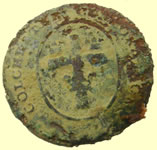 |
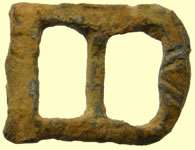 |
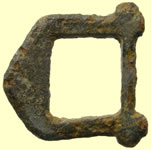 |
Military badge |
Colchester button |
1550-1650 buckle |
1550-1650 buckle |
 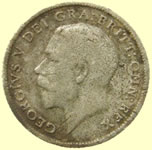 |
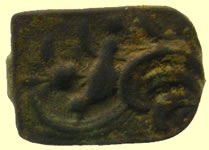 |
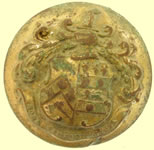 |
|
1918 George V milled silver sixpence |
18thC clog fastener |
19thC corporation button |
|
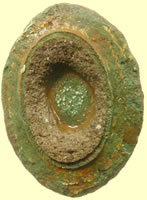 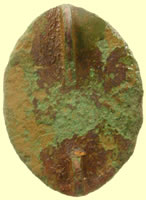 |
 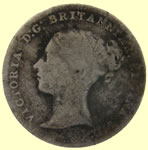 |
||
Roman brooch with possible missing intaglio centre |
1862 Victoria milled silver 3 pence |
||
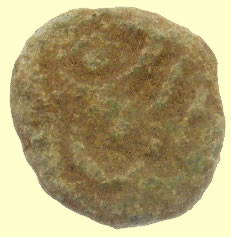 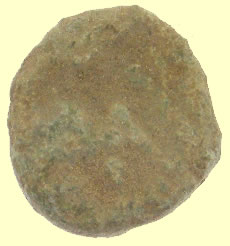 |
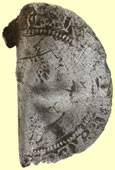 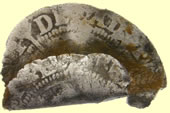 |
||
Tiny Roman minimus sent for ID Are you sure that isn't a silver sceat with a lot of encrustation?
It doesn't immediately recall any particular Roman types, unless the three parallel lines on the one side were meant to represent the points of a radiate crown. The other side has some sort of shape on it, but that doesn't suggest any Roman types at all.
Mark
PS - if you can clean it up a little, or if you can take a photo which shows the detail (if there is any) more clearly, I'll be glad to have another look at it.
|
16thC Elizabeth 1st hammered silver 3 pence |
||
  |
 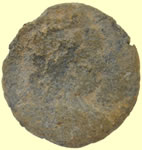 |
||
1327 Edward III hammered silver penny Rev CIVI/TAS/EBO/RACI- York mint Archiepiscopal issue |
17thC lead token |
||
 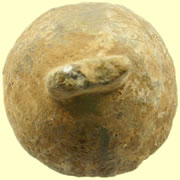 |
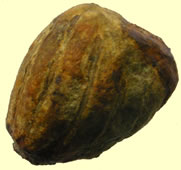 |
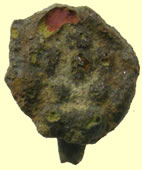 |
|
Post medeival lead trade weight |
Decorated Roman bronze finial |
16thC Tudor rose nount with 2 integral lugs |
|
 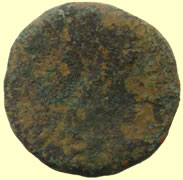 |
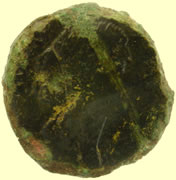 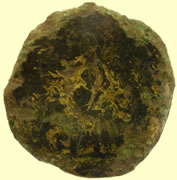 |
||
Huge 134 AD Hadrian Roman As coin |
Huge 134 AD Hadrian Roman As coin |
||
 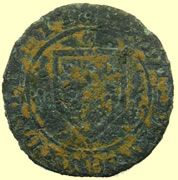 |
 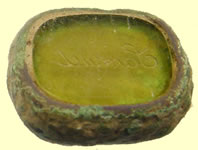 |
||
1497-1515 Louis XII Tower shield of Tournai French Jetton |
Georgian fob seal |
||
 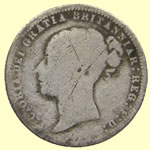 |
|
||
1838 Victoria milled silver sixpence |
Georgian silver lock and key |
||
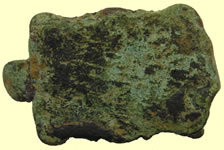 |
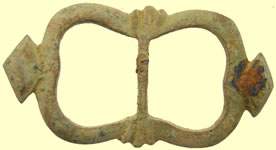 |
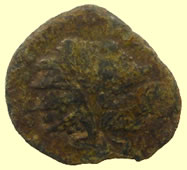  |
|
18thC clog fastener |
1500-1650 buckle |
4thC Barbarous radiate Roman bronze sent for ID This one is definitely not of official origin - it's a local contemporary copy. I'm not certain what prototype the engraver had in mind for the reverse - possibly AEQVITAS holding scales (off-flan) and cornucopiae, shown as vertical "tubes". Pax and Spes are generally the most copied types, although Victory and the priestl implements types are seen fairly often as types for these copies.
|
|
 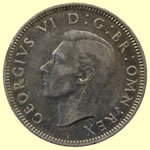 |
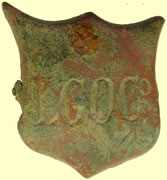  |
||
1944 George V milled silver sixpence |
1500-1700 Shield mount |
||
 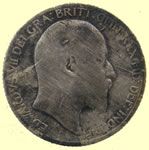 |
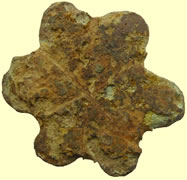  |
||
1903 Edward VII milled silver sixpence |
Roman cinquefoil mount |
||
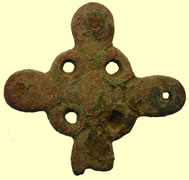 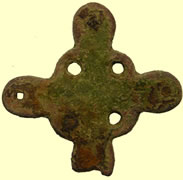 |
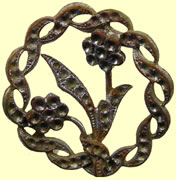 |
||
Medieval mount |
Victorian brooch |
||
  |
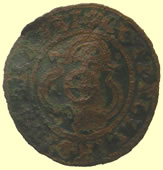 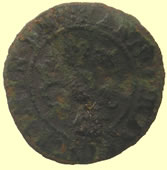 |
||
Medieval bronze beehive thimble |
1586 Hans Krauwincel II Rose orb Jetton HANNS KRAVWINCKEL IN NVRENB |
||
 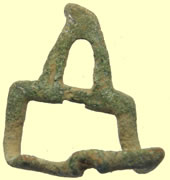 |
 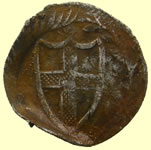 |
||
Interesting buckle - Georgian ? |
1649 Commonwealth hammered silver penny |
||
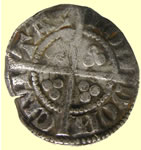 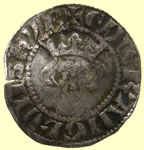 |
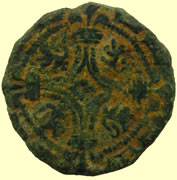 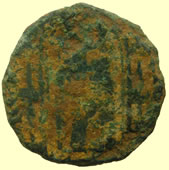 |
||
1341 Edward III hammered silver penny florin penny Obv EDWR ANGL DNS HYB Rev CIVI/TAS/LON/DON - London mint |
1371-1379 Duchy of Guelders - Mathide de Gueldre Rev Double standard arcuate cross fleuretty with a rampant lion (single tail) in each qtr |
||
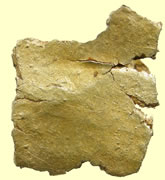 |
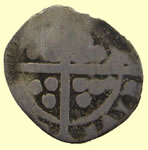 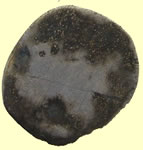 |
||
Ancient gold ingot - reported as treasure to museum |
Worn Medieval hammered silver penny - CIVI/TAS type |
||
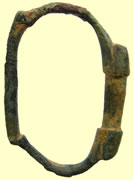 |
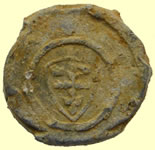 |
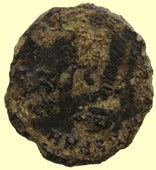 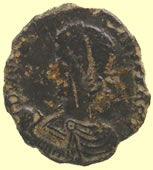 |
|
Medieval buckle |
Post medieval lead bale seal |
4thC Roman coin sent for ID This piece, despite the surviving features being so bold, seems so stylistically unusual that I'm afraid this also appears likely to be a contemporary copy. The bust appears to be bare-headed, but no useful part of the obverse legend is legible, and although official coins of the few rulers who were portrayed bare-headed (Constantius Gallus Caesar, Julian II as Caesar, Magnentius, Decentius and Nepotian) have a only a relatively small number of reverses with which they're associated, the reverse of this piece doesn't seem to have recognizeabe features of any of them. There is a fragment of legend which might be part of FEL TEM ] P REPAR [ATIO (?) but that doesn't seem to line-up in correct orientation for any of the FEL TEMP reverse types rulers in this group used.
Maybe it's just me, today, but I can't make any other sense out of that reverse at all. In fact almost all the photos you've sent in the last couple of days fail to resemble any of the specific types they'd need to be, based on what features are clearly visible.
Mark
|
|
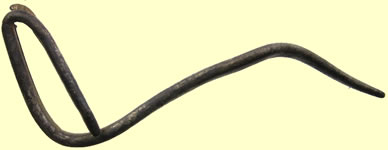 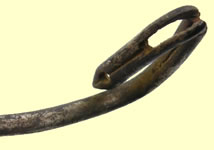 |
|||
Post Medieval silver bodkin needle - reported as treasure to museum |
|||
 |
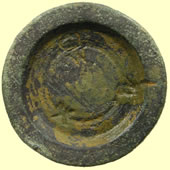 |
  |
|
17thC crotal bell |
17thC William III trade weight - Crown W cipher |
1215 Henry III hammered silver short cross halfpenny
Rev ** NTER - Canterbury mint |
|
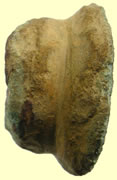  |
 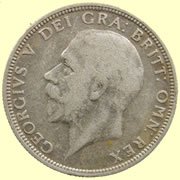 |
||
Roman bronze mount |
1931 George V milled silver florin (24 pence) |
||
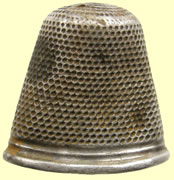 |
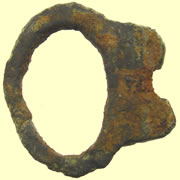 |
 |
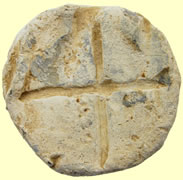 |
19thC silver thimble |
Medieval buckle with integral chape |
1500- 1700 buckle |
Medieval trade weight |
 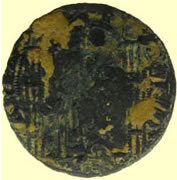 |
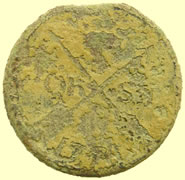 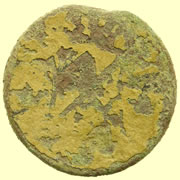 |
||
The Standing King series Charles IV 1322-28 French Jetton Obv 'king with sceptre standing beneath a gothic canopy' Type 404 Mitchiner Rev Triple stranded straight cross fleuretty in 4 arched tressure |
1771 Swedish copper coin |
||
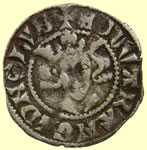 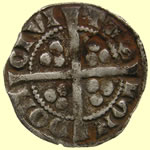 |
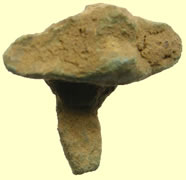  |
||
1341 Edward III hammered silver penny florin penny Obv EDWAR ANGL DNS HYB Rev CIVI/TAS/LON/DON - London mint |
Tiny 2nd C Roman fibular brooch |
||
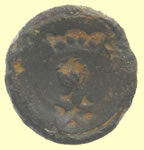 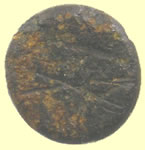 |
 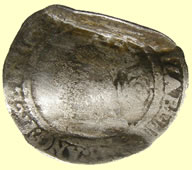 |
||
1464 Half Ryal gold coin weight - Rose and crown (incuse) |
1567 Elizabeth 1st hammered silver 3 pence |
||
Roman pin |
|||
 |
|||